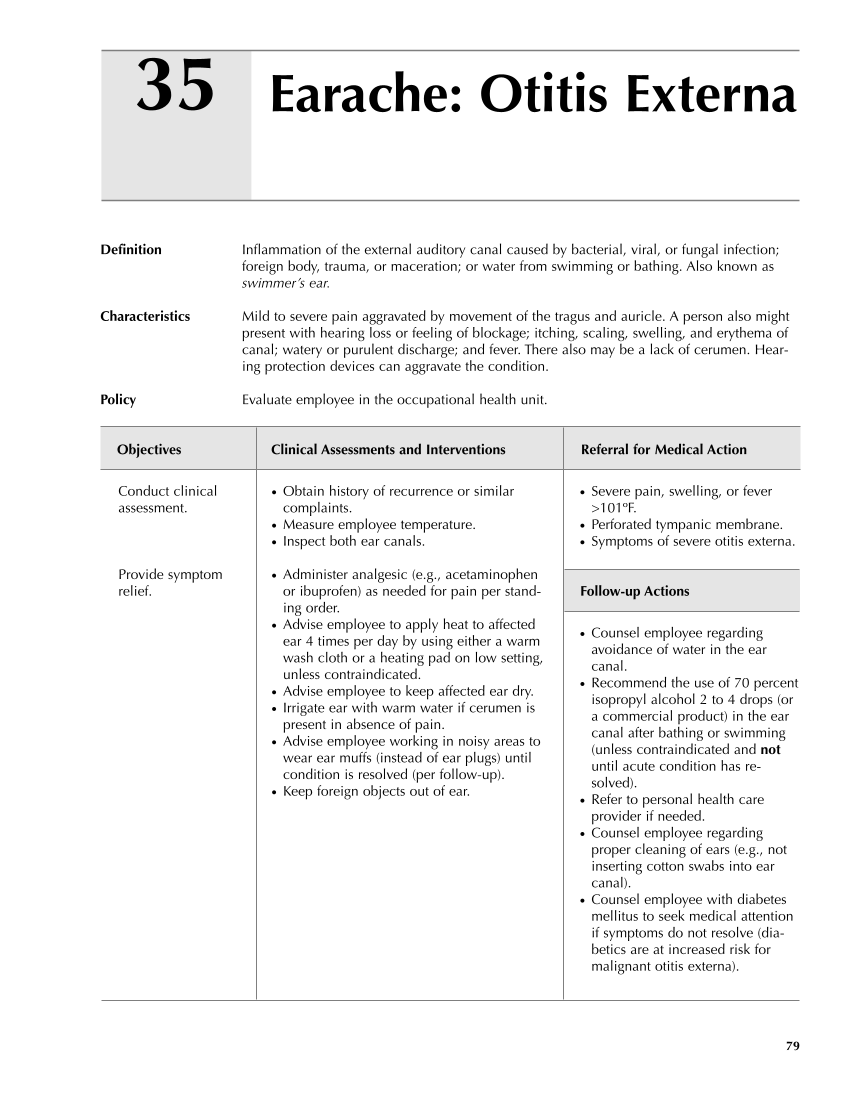79 Earache: Otitis Externa 35 Definition Inflammation of the external auditory canal caused by bacterial, viral, or fungal infection foreign body, trauma, or maceration or water from swimming or bathing. Also known as swimmer’s ear. Characteristics Mild to severe pain aggravated by movement of the tragus and auricle. A person also might present with hearing loss or feeling of blockage itching, scaling, swelling, and erythema of canal watery or purulent discharge and fever. There also may be a lack of cerumen. Hear- ing protection devices can aggravate the condition. Policy Evaluate employee in the occupational health unit. Objectives Clinical Assessments and Interventions Referral for Medical Action ● Severe pain, swelling, or fever 101ºF. ● Perforated tympanic membrane. ● Symptoms of severe otitis externa. Follow-up Actions ● Counsel employee regarding avoidance of water in the ear canal. ● Recommend the use of 70 percent isopropyl alcohol 2 to 4 drops (or a commercial product) in the ear canal after bathing or swimming (unless contraindicated and not until acute condition has re- solved). ● Refer to personal health care provider if needed. ● Counsel employee regarding proper cleaning of ears (e.g., not inserting cotton swabs into ear canal). ● Counsel employee with diabetes mellitus to seek medical attention if symptoms do not resolve (dia- betics are at increased risk for malignant otitis externa). Conduct clinical assessment. Provide symptom relief. ● Obtain history of recurrence or similar complaints. ● Measure employee temperature. ● Inspect both ear canals. ● Administer analgesic (e.g., acetaminophen or ibuprofen) as needed for pain per stand- ing order. ● Advise employee to apply heat to affected ear 4 times per day by using either a warm wash cloth or a heating pad on low setting, unless contraindicated. ● Advise employee to keep affected ear dry. ● Irrigate ear with warm water if cerumen is present in absence of pain. ● Advise employee working in noisy areas to wear ear muffs (instead of ear plugs) until condition is resolved (per follow-up). ● Keep foreign objects out of ear. Guideline continues on next page
Purchased from OEM Press by (ge corporate access). (C) 2013 OEM Health Information, Inc. All rights reserved.












































































































































































































































































































































































































































